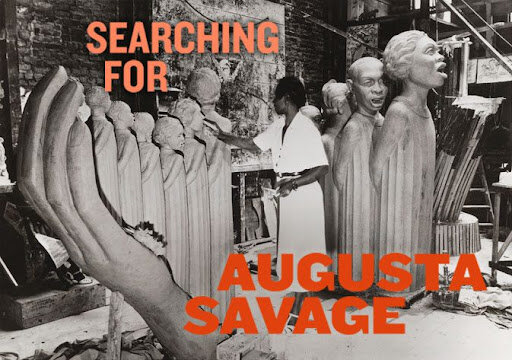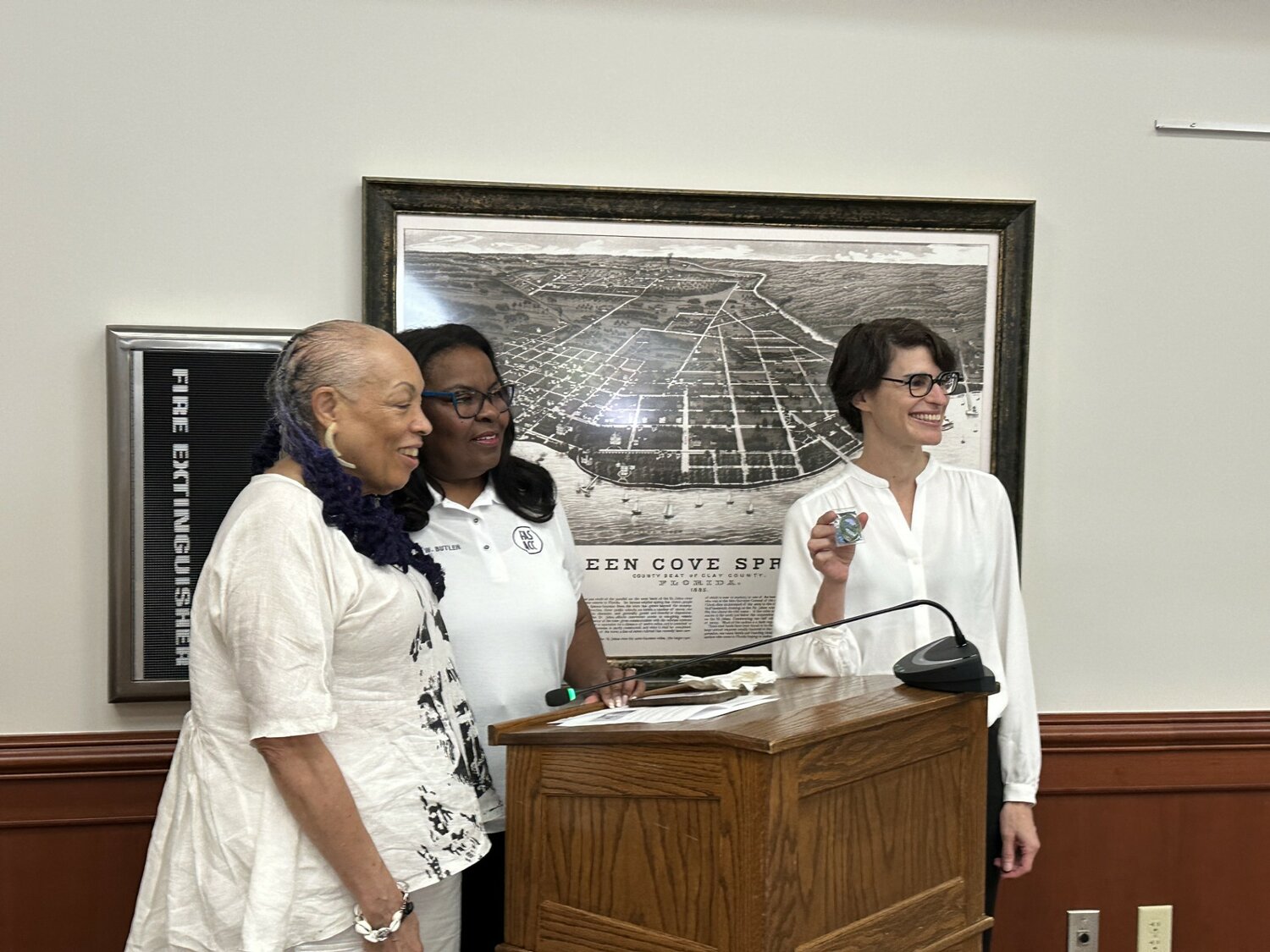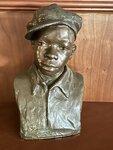‘Searching for Augusta Savage’ story comes home
Co-writers, directors host special documentary screening at City Hall
GREEN COVE SPRINGS — Co-writers and producers Sandy Rattley and Charlotte Mangin were given 10 minutes to make a short documentary on missing artwork and the lack of acknowledgment of the city’s …
This item is available in full to subscribers.
Attention subscribers
To continue reading, you will need to either log in to your subscriber account, below, or purchase a new subscription.
Please log in to continueDon't have an ID?Print subscribersIf you're a print subscriber, but do not yet have an online account, click here to create one. Non-subscribersClick here to see your options for subscribing. Single day passYou also have the option of purchasing 24 hours of access, for $1.00. Click here to purchase a single day pass. |
‘Searching for Augusta Savage’ story comes home
Co-writers, directors host special documentary screening at City Hall
GREEN COVE SPRINGS — Co-writers and producers Sandy Rattley and Charlotte Mangin were given 10 minutes to make a short documentary on missing artwork and the lack of acknowledgment of the city’s most revered resident, Augusta Savage.
No matter how much they cut and trimmed their work, much more needed to be said.
“We started on some work in 2016 (for the “American Masters” series), and by 2020, we had 26 films about people who are history makers who people don’t know about,” Rattley said before their documentary was shown last Saturday, Aug. 3. We started with a list of 250, and Augusta was on that list. We produced 26 films, and Academy historians and humanities scholars advised us to pick the women we chose. We kept feeling like Augusta’s story needed to be told. Many other women were prominent in government, policy, labor and STEM fields. There wasn’t anybody in the same category as Augusta, who was an artist or activist – no space for many other people in the arts community, arts center, or training. She has an amazing legacy, not just as a creator and a sculptor herself, but in making space for many other people to experience success. Many people she mentored are some of the most famous artists in American art.
“She was so selfless, and as we looked at the stories of forgotten women, it seemed that this woman should not be forgotten.”
“Searching for Augusta Savage,” which left so many aspects of her life untold, still ran 21 minutes and 48 seconds, not the standard 10 minutes.
Mangin spent two years digging through facts on the 250 forgotten women who affected American history. Along with Rattley, they quickly identified Savage as one of their main focuses.
Narrated by Dr. Jeffreen M. Hayes, the story tells the story of Augusta, the seventh of 14 children, who was born in Green Cove Springs. As a child, she would form clay ducks from a clay pit near her home off Houston Street, where The Cove Apartments now stand.
Rattley and Mangin focused on her being commissioned to create a sculpture for the 1939 World’s Fair in Flushing, New York. She took the National Negro theme, “Lift Every Voice and Sing.” The 16-foot piece took more than a year. It became one of her iconic pieces, “The Harp.” It was one of the most popular and photographed items at the World’s Fair that year. The 16-foot piece took more than a year to create, and it took the form of a large harp with strings represented by 12 Black singers of decreasing size, supported by an arm and hand. At the front was a young, kneeling black man with a piece of sheet music for the song. It became one of her iconic pieces, “The Harp.”
The sculpture was made of plaster, and she didn’t have the money to encase it in bronze, so it was destroyed when the fair closed.
Her other iconic piece is a bust of a young man called “Gamin.” A copy of that piece is at Green Cove Springs City Hall Chambers.
Although she spent many of her 24 years in New York teaching children the arts, establishing galleries, being closely associated with the Harlem Renaissance, and being a renowned trailblazer for equal rights for Blacks in the arts, Rattley and Mangin were surprised that the only significant historical markers for Savage were at her birthplace in Green Cove Springs and at Saugerties, New York, where she spent the final 17 years of her life.
Mangin said one of the film’s purposes was to show Savage is credited with creating more than 160 pieces of art, but more than half are either lost or were destroyed. Many were destroyed because Savage couldn’t afford to encase them in bronze to ensure their longevity. Others are likely to be part of private collections.
The documentary weaves you through the Savage’s triumphs and struggles during a tumultuous time in the country’s history. But for every setback, she pushed for equality and created a sense of self-respect, appreciation and accomplishment for thousands of her art students.
“I’ve been a documentary filmmaker for 25 years,” Rattley said. “This was truly one of the most inspiring projects I’ve had a chance to participate in. I hope we’re contributing a little to spreading the news about her story, ensuring a new generation of artists knows about her.”
Rattley’s and Mangin’s Audacious Women Production’s “Searching For Augusta Savage” is available at Amazon.com, YouTube.com, PBS.org and the PBS App.














